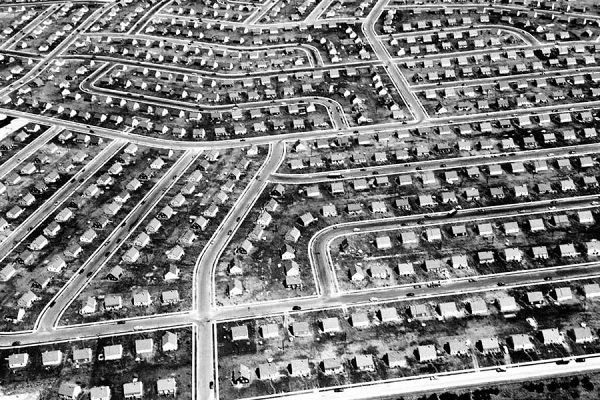
Attorney Scott Pilutik wrestles with the news of the day, from a lawyerly perspective…
There’s no shortage of articles about the unequal treatment African-Americans receive from the criminal justice system, and even there the answers run deeper than inherent bias by officers. People’s attitudes matter a great deal, but African-Americans still face institutional and policy barriers, and those barriers don’t exist solely in the criminal justice world. I believe that the answer to why criminal justice inequality persists today can be found in housing policy.
I grew up in Levittown, Long Island, a blue collar development built in the wake of WWII primarily to provide low-income housing opportunities (no down payments!) for returning soldiers and their families. It would have been ideally suited to returning black soldiers and their families from the city. However, clause 25 of every Levitt lease stated that the home could not “be used or occupied by any person other than members of the Caucasian race.” This all occurred even as segregation barriers elsewhere were falling, and persisted long after the Supreme Court struck down similar lease restrictions.
Levittown is anecdotal evidence for my point, though significant given its proximity to the city — the entire metropolitan area would be far different had blacks been permitted to move to Levittown. Levitt’s role can be debated but it’s also the case that race-restrictive lease covenants were everywhere, reinforcing segregation at the crucial 1950s juncture, when America was transforming itself into the wealthiest country in the world.
Far more significantly, the Federal Housing Authority, established in 1934, refused to insure mortgages in and near African-American neighborhoods, which came to be known as “redlining.” The FHA would also only subsidize builders who enforced race-restrictive covenants. The FHA manual actually held out that “incompatible racial groups should not be permitted to live in the same communities.”
Among the middle class, wealth isn’t passed down generationally through stock portfolios, it’s passed down through the family home, which can be sold, mortgaged, or lived in. Because the FHA so greatly restricted the home-buying options for African-American families during this key time, right through the 1960s, African-American families, relegated to the rental market, were basically excluded from the huge jump in home values over that time.
With that home equity, suburban whites were able to take out bigger loans, send their kids to college, take care of their parents, and then bequeath that same wealth to their children. The disparity you often see when you drive between “white” and “black” neighborhoods didn’t happen by accident, that right-track-wrong-track divide is the poison fruit of explicitly racist policies that, despite being undone in name by the courts, were never really remedied. (And that we’re aware of numerous exceptions to the rule doesn’t alter the rule.)
The prevalence of segregated communities with disparate wealth profiles leads to disparate policing. The monied class has a disproportionate say in what our criminal justice system looks like, so it’s no accident that our laws tend to disproportionately target low-level crime while constantly inventing new benefits of doubt for the white-collar crime committed by the wealthy and political class.
I think the protests we’re experiencing would have already petered out if they were exclusively about police brutality, though perhaps not, given how historically resistant precincts have been toward accountability and transparency measures. But what we’re seeing, I think, is African-Americans’ justified anger at the double standard — the two criminal justice systems — which double standard is rendered too easily enforceable by the geographic boundaries drafted between 90 and 60 years ago and never made right.
What got me thinking about that was th Richard Rothstein book, The Color of Law, which I highly recommend. I don’t recall Rothstein fusing his thesis to criminal justice in a significant way, but it’s an obvious jump.






